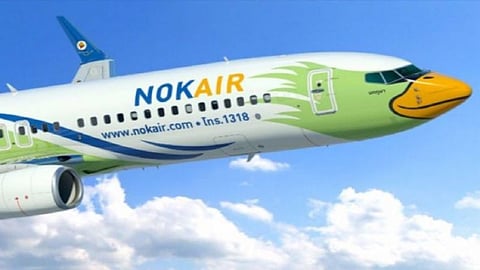
- Home
- Live Blog
- Breaking News
- Top Headlines
- Cities
- NE News
- Sentinel Media
- Sports
- Education
- Jobs

Suspension of the Guwahati-Bangkok flight – ‘temporary’ though – by the low-cost Nok Air that operates out of Thailand is nothing to be surprised about. This flight was destined to be withdrawn, for the simple reason that there are not enough people flying between Guwahati and Bangkok that is required to make an international air route economically viable. In fact, the first Guwahati-Bangkok international flight that Air India had introduced way back in 2002 had also flopped for the same reason. In the case of both the flights – Air India’s in 2002 and Nok Air’s in 2020 – have suffered from the same disease, that of unplanned decision to introduce the flight between the two cities. In the case of the previous Air India flight, which was a weekly one, the real situation was that the same plane-load of people who fly from Guwahati to Bangkok returns by the next week’s flight, with not a single passenger flying in from the other end being an incoming tourist or visitor. Going by media reports, the occupancy status of the latest Nok Air flight has been no different. Hardly has any passenger, other than those belonging to the Northeastern Region has ever flown in from Bangkok to Guwahati. The government, which has been boasting of its ambitious Act East Policy, has seriously flawed in the case of planning things in the right perspective, and the poor status of the Guwahati-Bangkok flight is a glaring illustration of this flaw. What even a high school student can probably say is that there is no motivation for any person from Thailand to fly to Guwahati and visit Assam and the Northeastern Region. The reasons are simple. One, while Thailand has been aggressively marketing its various tourist destinations across India and has achieved an annual Indian tourist arrival in that country increase of 10 to 15 per cent, there is hardly any promotional campaign in Thailand to attract the Thais to India. The Thais anyway are not very good travellers. Instead, they have proved to be far ahead of the Indians in selling their country as one of the hottest tourist destinations in the world. Tourism in fact is a major revenue-earner for Thailand, and the country gets visitors from all over the world round the year. While India Tourism or the tourism departments of the Northeastern states have been concentrating more on the Western countries for carrying out various marketing campaigns, what these, particularly in the case of Assam appears to be are nothing more than foreign holidays for ministers, politicians and officers. As a large number of Western tourists visit Thailand, one good way of making the Bangkok-Guwahati-Bangkok flight would be to lure tourists from Western countries visiting Thailand to plan an extension to Assam and the Northeast. Buddhism being a major religion in a number of South-east Asian countries, as also in Japan, yet another area that can be experimented for getting tourists from these countries through Bangkok is the several Buddhist shrines and monuments in the Northeast, particularly in Arunachal Pradesh and Assam. Exchange programmes of sports and cultural contingents as well as academic and research scholars can be another area that can help generate travellers between Guwahati and Bangkok. The Tai connection between some communities living in Assam and Aunachal Pradesh and the people of Thailand too can be examined and explored for generating increased tourist traffic between Guwahati and Bangkok. About activities related to trade and commerce between Northeastern India and Thailand, the less said the better. There are no products manufactured in Assam and the Northeast that can find a market in Thailand. Likewise, even if there are two dozen tourists from Thailand to Guwahati every week, there is hardly anything that they will find interesting to purchase and carry home. Silk fabrics that are manufactured in Assam are meaningless for Thais who produce their own silk. Selling a few wooden rhinos by the national highway in Kaziranga or in the government emporium in Guwahati does not amount to any kind of tourism economy. The governments of the Northeastern states should join hands with the private tour operators for a series of brainstorming sessions in order to identify the numerous lacunae, engage institutions like the IIMs, carry out detailed research and draw up a long-term plan instead of continuing with a hand-to-mouth kind of strategy. It is also time the government informs the people what have been the impact of various foreign trips tourism minister, politicians and government officers have undertaken, say in the past four years, and how many tourists have actually come from those countries which they had visited with people’s money in the past four years.